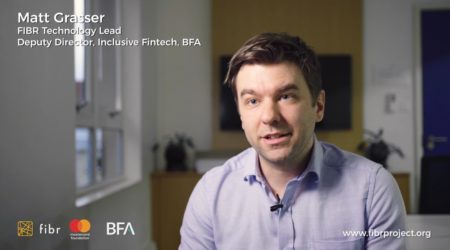Rethinking Agents to Scale PAYGo Businesses
How to Leverage Agents for Critical Customer Relationship Management

Field agents have been critical to expanding digital financial services in emerging markets, and we are seeing the same with pay-as-you-go (PAYGo) models to finance off-grid solar. Agents are at the heart of the PAYGo model, and a PAYGo provider’s success depends on the success of its agents. Unfortunately, current churn rates suggest agents are having problems, hindering both customer experience and the sector’s ability to scale. PAYGo providers need to better support agents in order to leverage them beyond the initial sale and grow the PAYGo business as a whole.
FIBR’s work with PEG Africa’s agent network in Ghana suggests that PAYGo operators need to rethink how they manage agents to better align company and agent goals across sales, portfolio, and customer experience.
Focus on Quality Sales
PAYGo operators tend to think of agents as sales machines, but they actually carry out a variety of critical functions: pitching to prospects, closing sales, facilitating mobile money wallet signups, training customers on bill pay, solving hardware problems, conducting cash-in and top-up transactions, and generally acting as the face of the company. Moreover, selling PAYGo isn’t easy; the products are more expensive than fast-moving consumer goods (FMCG) and do not sell themselves like soda or airtime. They require skilled pitches — often made multiple times — to complete a sale. And PAYGo products need follow-up in terms of product and customer care, and continued collection of payments. Given this complexity, operators need agent management models that strike the right balance between hardware sales — the predominate focus in the early years of PAYGo — and the longer-term challenge of providing sustained access to financial services.
The sales machine approach to agents is understandable given pressure from investors that are seeking exponential customer growth. However, this focus may be driving high churn among agents and undermining their long-run success. While there have been changes in the last year, unit sales still dominate the KPIs investors and donors care about, and month-on-month, year-on-year growth is a key predictor for evaluating a PAYGo operator’s ability to raise funding. PEG Africa’s CEO Hugh Whalan sees a need to shift the focus to the quality of sales:
“The hardest piece of the PAYGo model is ensuring customers repay their loans. [R]epayment is highly correlated with customer use, customer satisfaction, and customer referrals, which lead to more sales. High repayment rates are therefore a terrifically good indicator of whether you have a sustainable business model or not. Sales are obviously important, but as a business gets larger, the focus needs to be mostly on ‘quality sales’ that give you the best shot of repayment.”

A Misaligned Salesforce
The overemphasis on sales is fueling a focus on the wrong metrics and can drive long term portfolio problems at PAYGo operators. Consider a company that is behind on annual sales targets at the end of Q3. This company will quickly onboard dozens of new agents to maximize sales in the field for the last quarter, or set sales incentives to boost immediate sales. However, if agent training and onboarding is rushed or carried out poorly, the company will likely end up with customers who have limited ability to repay on time, who live outside of the company’s normal service areas, or who may not even have mobile money access — all of which will cause portfolio headaches in the new year. Overall portfolio health is critically important to PAYGo growth, but it is often a lower priority than sales targets and, in some institutions, does not factor into agent compensation models at all. Agents maximize new sales, and ignore credit assessment and follow ups for non-payment because their targets and compensation schemes are designed as such.
This focus on sales has resulted in a traveling agent model that is driving agent churn. High per-agent sales targets typically require an agent to be on the road 25+ days a month, moving from village to village every few days. This leads to high productivity in the near term as the agent goes to areas with many early adopters who have not yet purchased. However, agents tend to burn out quickly with so much travel.
This traveling model also leads to gaps in customer relationships, as visits are infrequent and are only made to areas where there is a high concentration of potential customers. The PAYGo operator ends up with a customer base with wide geographic penetration in terms of number of villages served, but low penetration in each village as agents only reach early adopters and rarely circle back to take advantage of referrals. Credit due diligence is also difficult as the agents are unfamiliar with the villages and don’t have time to build relationships to build trust.

Three changes PAYGo companies can make in agent management to align goals of sales growth AND portfolio health:
1) Realign Agents for Customer Relationship Management.
Providers should move beyond thinking of agents as sales machines to position them as higher-touch customer relationship managers.
- Combine sales, service, and customer repayment success in one universal agent by shifting from a FMCG-based model common with telecoms to a relationship-based model more in common with microfinance organizations. And, where required, consider adding mobile money agent functionality. PEG started this shift in late 2016, and over the last two years the company has made dozens of changes to further optimize the agent model to align with company goals. During Phase 1 of our FIBR Project, we supported PEG in designing and testing a new model where PAYGo sales agents were also issued mobile money agent accounts, giving them an extra income stream and an expanded basket of solutions to offer their existing PEG customer base.
- Focus on long-term geographic penetration to reach beyond early adopters with some agents based in target markets as opposed to larger towns. This approach will give agents a long-term view and address burn out. Focus on deepening penetration and improving portfolio quality, and use data to measure progress across company and customer success metrics. During the FIBR project, PEG was able to test a universal agent model where agents assigned to a geography were tasked with: acquiring new customers, following up on non-payments, making removals (when necessary), and managing float to assist with customer mobile payments.
2) Expand incentives to drive sustainable sales, cross sales, and repayment.
PAYGo companies need to hit sales targets, hit portfolio targets, and maximize cross-selling/up-selling, but agent incentives models rarely cover all three.
- Align incentives so agents are motivated to make a sale, but also to collect payments for it, upsell more products, and stick with the company. For example, PEG’s incentive model combines a commission that’s split between sales and customer repayment targets during the first six months, as well as bonuses for exceeding targets on both.
- Modify Agent KPIs to better match the company long-term goals of sustainable sales, cross and upselling, and portfolio health — and tie these KPIs to incentives. PAYGo operators could test metrics such as average revenue per user (ARPU) to encourage larger payments or cross-sells, or could track and measure village penetration metrics. In Ghana, PEG offers the opportunity for commission-based agents to graduate to earning a regular salary with benefits through sustained positive performance across sales and portfolio metrics.
- Test and validate improvements with data when evaluating changes to KPIs, compensation, and incentives. Pay particular attention to net take-home pay for agents, and follow this metric for at least three months after a change. When PEG rolled out compensation model changes in 2017 to better align incentives, they were controversial at first. However, PEG was able to use data analysis to demonstrate that agents were, on the whole, better off in terms of take-home pay throughout the year, and during down months in particular.
- Monitor the impact of changes. As you evaluate changes to compensation and incentives, answer three questions: 1) Is the absolute take-home amount sufficient for the job to be attractive?; 2) Is the structure of the compensation model effective (i.e., part upfront, part over time as customers pay)?; and 3) Is the channel of communicating these changes effective (i.e., do the agents understand it)?
3) Empower the agent with customer relationship tools and the right data at the right time.
- Provide tools for understanding and evaluating customer credit risk. Guide agents in rigorous customer evaluation and selection processes, use smartphone apps to give agents visibility into customer repayment performance, and give them reminders and tools for following up with non-payers.
- Where possible, leverage smartphones and apps to provide notifications and to drive agent tasks for sales, customer care, and repayment follow up. For example, with smartphones, sales routes could be optimized, and headquarters would be able identify agents that are struggling with sales (high pitch to conversion ratios) and give them more targeted support. We surveyed PEG agents after rolling out a customized app to support their functions and found that 88% of sales agents believed their job was easier using the app, 92% believed it improved their ability to manage their customer relationships, and 94% of agents thought the app had improved their relationship with PEG.
- Improve performance & earnings visibility for agents. Agents do not always understand their compensation structure. In FIBR’s work with PEG, we were able to use an open tool like AppSheet to quickly set up a smartphone app minimum viable product (MVP) to test different ways to provide critical performance, earnings, and customer relationship management information to agents at the right time.
This rethinking may involve some fundamental changes to the way sales are done, but should increase revenue and portfolio health per client, increase sales penetration per village, and align staff incentives from the sales pitch through payments towards a long-term customer relationship. Our work with PEG has found that these changes can significantly impact agent performance — across both unit sales and customer repayment metrics — as well as agent satisfaction and retention.

FIBR stands for Financial Inclusion on Business Runways and aims to learn how to transform emerging business data about low-income individuals and link them to inclusive financial services to deepen financial inclusion and its impact. FIBR is a project of BFA in partnership with Mastercard Foundation.
Stay connected by signing up for the FIBR mailing list and joining the Inclusive Fintech Group on LinkedIn.



